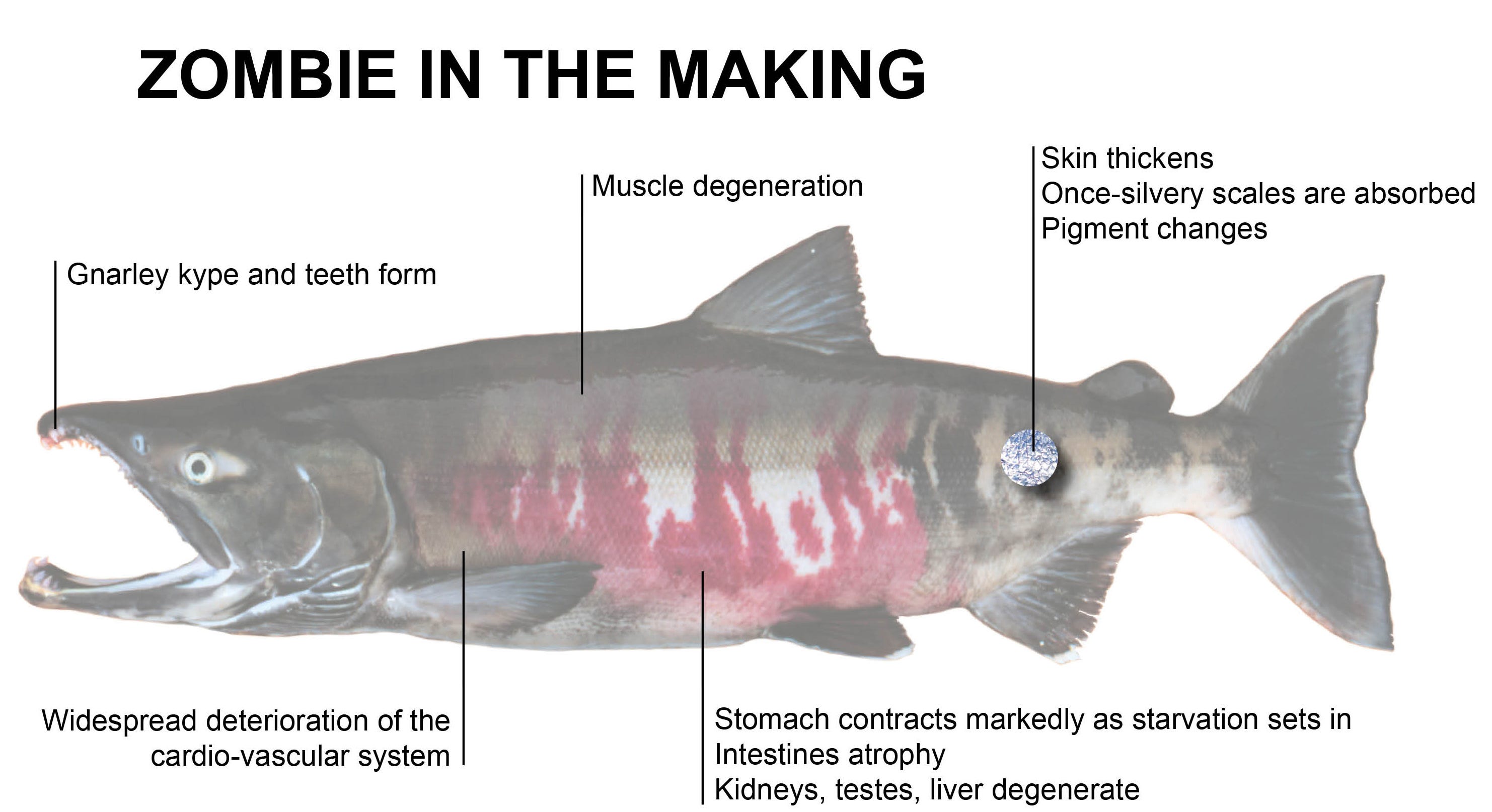After they spawn, Pacific salmon turn into zombies. They remain alive, but their skin falls off as it rots and their bodies begin to slowly shut down. This bizarre transformation, while alarming, plays a crucial role in the ecosystem of the Pacific Northwest. These "living dead" fish provide sustenance for various scavengers and help in nutrient recycling within their habitats.
Following their birth in freshwater streams, rivers, and lakes, Pacific salmon embark on a remarkable journey to the North Pacific waters surrounding the U.S. and Canada. They spend most of their lives in these oceanic regions, growing and maturing until a biological clock signals them to return to their birthplace for spawning. This journey marks the end of their life cycle, as they will die soon after laying their eggs.
Understanding the transformation salmon undergo during this final phase is essential. Katrina Liebich, a Fisheries Outreach Coordinator at the U.S. Fish and Wildlife Service, explains that while other fish also die after spawning, only salmon display this unique "zombie-like decline." This process of deterioration is particularly unique to salmon, showcasing the intricacies of their life cycle and the vital role they play in their ecosystems.
What You Will Learn
- The unique transformation of Pacific salmon post-spawning.
- The ecological benefits provided by "zombie" salmon.
- The biological mechanisms driving salmon migration and spawning.
- Insights from experts on the role of salmon in their ecosystems.
The Lifecycle of Pacific Salmon
The lifecycle of Pacific salmon is a fascinating journey that begins in freshwater and culminates in their final spawning event. After hatching, juvenile salmon migrate to the ocean, where they grow into adults before returning to their natal streams to reproduce. This remarkable journey is guided by instinct and biological cues, ensuring that they return to the same place where they were born.
As salmon navigate their way back upstream, they undergo significant physical changes. One of the most notable changes is the alteration in their coloration, driven by the movement of pigments within their bodies. This transformation prepares them for the challenges of spawning, where they will compete for mates and expend their energy reserves in the process.
Physical Changes During Migration
During their migration, male salmon develop distinct physical features, such as larger teeth, which help them compete against rivals for mating opportunities. Female salmon, on the other hand, focus their energy on producing eggs, depleting their fat reserves in the process. This energy expenditure is crucial for the survival of their offspring, but it comes at the cost of their own vitality.
Ecological Impact of Salmon's "Zombie" Phase
Once salmon have completed their spawning, they enter a phase that can be described as a "zombie" state. While they continue to swim and breathe, their bodies begin to deteriorate rapidly. The rotting carcasses of these fish become a vital food source for a variety of scavengers, including bears, birds, and insects. This nutrient recycling is essential for the health of the ecosystem.
As salmon carcasses wash ashore or drift back into the ocean, they provide essential nutrients to the surrounding environment. Scavengers that consume these carcasses help in breaking down the organic matter, which in turn supports new growth in the ecosystem. This process illustrates the interconnectedness of life cycles and the importance of each species within the food web.
Safety and Sustainability
Interestingly, despite their decayed state, salmon that have completed their spawning cycle are not harmful to humans. In fact, they can still be caught and consumed, although the quality may differ from those caught at sea. According to Liebich, the fillets from these "zombie" salmon may be less desirable due to the depletion of their fat reserves, but they remain a viable food option.
This aspect of salmon's life cycle underscores the importance of understanding and respecting nature's processes. By recognizing the role that even the most degraded forms of life play in the ecosystem, we can develop a deeper appreciation for the balance of life in our natural world.
Conclusion: The Circle of Life
Pacific salmon exemplify the intricate connections within our ecosystems. Their transformation into "zombies" after spawning is not just a fascinating phenomenon; it serves as a critical part of nutrient cycling and food availability in their habitats. By understanding the lifecycle of these remarkable fish, we can better appreciate their role in the environment and the delicate balance of life that sustains us all.
Next time you see salmon, remember their extraordinary journey and the vital contributions they make, even in their final moments. The story of the Pacific salmon is a testament to nature's resilience and the continual cycle of life.
Tax Assessor-Collector Ann Harris Bennett's Absence Raises Questions In Texas
Ukrainians' Support For President Zelensky Amid Ongoing Conflict With Russia
Ella Emhoff Shines At New York Fashion Week: A Look At Her Journey And Style


